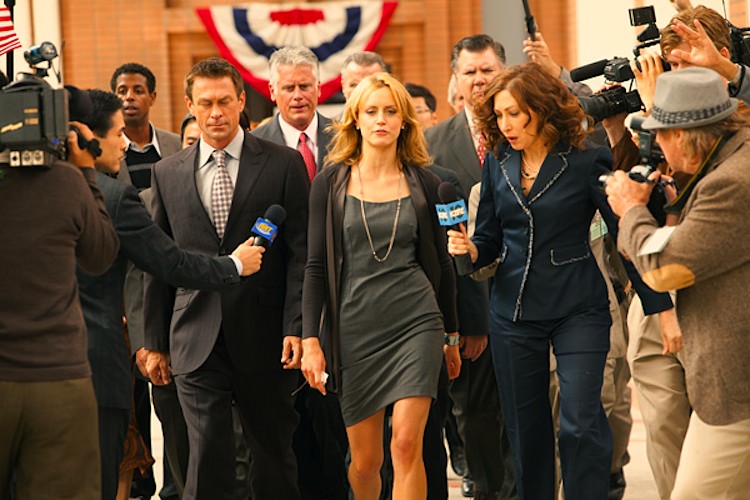By Jason Apuzzo. Writing in The Wall St. Journal today, P.J. O’Rourke weighs with a blistering critique of the new Atlas Shrugged. I’ve excerpted from his piece below. What’s interesting about O’Rourke’s take on the film is that it’s quite obviously coming from someone sympathetic to Rand’s overall cause, and therefore lacking an ideological axe to grind.
I’d like to just say generally that we’ve been as supportive of this film as we can be here at Libertas. Long before people in the conservative/libertarian/Tea Party world began jumping on board this film’s train (so to speak), Libertas was the first to report from the film’s set, conducting the first extensive interview with the film’s director, Paul Johansson (see here and here). It’s also worth mentioning that back in 2005 we did a special tribute to Ayn Rand at The Liberty Film Festival, in which we showed the restored 1942 film version of Rand’s We the Living (directed by Goffredo Alessandrini, with Alida Valli and Rossano Brazzi) and had filmmaker/restoration producer Duncan Scott and noted Rand scholar Jeff Britting speak. So we want these sorts of projects to do well.
However, it’s becoming increasingly obvious that this current version of Atlas Shrugged has few advocates outside of the usual right-wing media chorus, and even a few doubters within it. Suffice it to say that P.J. O’Rourke was not overwhelmed by what he saw:
Atlas shrugged. And so did I.
The movie version of Ayn Rand’s novel treats its source material with such formal, reverent ceremoniousness that the uninitiated will feel they’ve wandered without a guide into the midst of the elaborate and interminable rituals of some obscure exotic tribe.
Meanwhile, members of that tribe of “Atlas Shrugged” fans will be wondering why director Paul Johansson doesn’t knock it off with the incantations, sacraments and recitations of liturgy and cut to the human sacrifice.
Upright railroad-heiress heroine Dagny Taggart and upright steel-magnate hero Hank Rearden are played with a great deal of uprightness (and one brief interlude of horizontality) by Taylor Schilling and Grant Bowler. They indicate that everything they say is important by not using contractions. John Galt, the shadowy genius who’s convincing the people who carry the world on their shoulders to go out on strike, is played, as far as I can tell, by a raincoat.
The rest of the movie’s acting is borrowed from “Dallas,” although the absence of Larry Hagman’s skill at subtly underplaying villainous roles is to be regretted. Staging and action owe a debt to “Dynasty”—except, on “Dynasty,” there usually was action.
In “Atlas Shrugged–Part I” a drink is tossed, strong words are bandied, legal papers are served, more strong words are further bandied and, finally, near the end, an oil field is set on fire, although we don’t get to see this up close. There are many beautiful panoramas of the Rocky Mountains for no particular reason. And the movie’s title carries the explicit threat of a sequel.
You can read the rest of the piece here. O’Rourke goes on to make a point I’ve made here previously, which is that Shrugged‘s producers really should’ve considered either: a) setting the film in some sort of ‘alternate’ future, in which trains were not considered the most vital means of transportation (requiring some alteration of Rand’s basic storyline), or; b) simply setting the film in an ‘alternate’ version of 1957, when the novel was actually published. Continue reading P.J. O’Rourke: “Atlas Shrugged. And So Did I.” + Shrugged Part I Producer Says There May Not be Any Sequels
